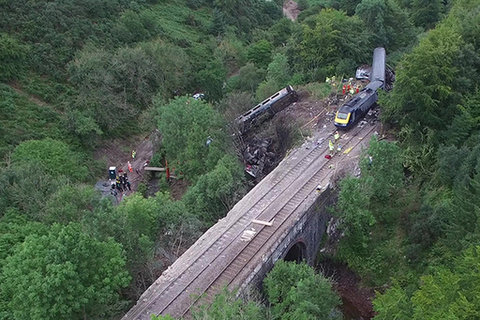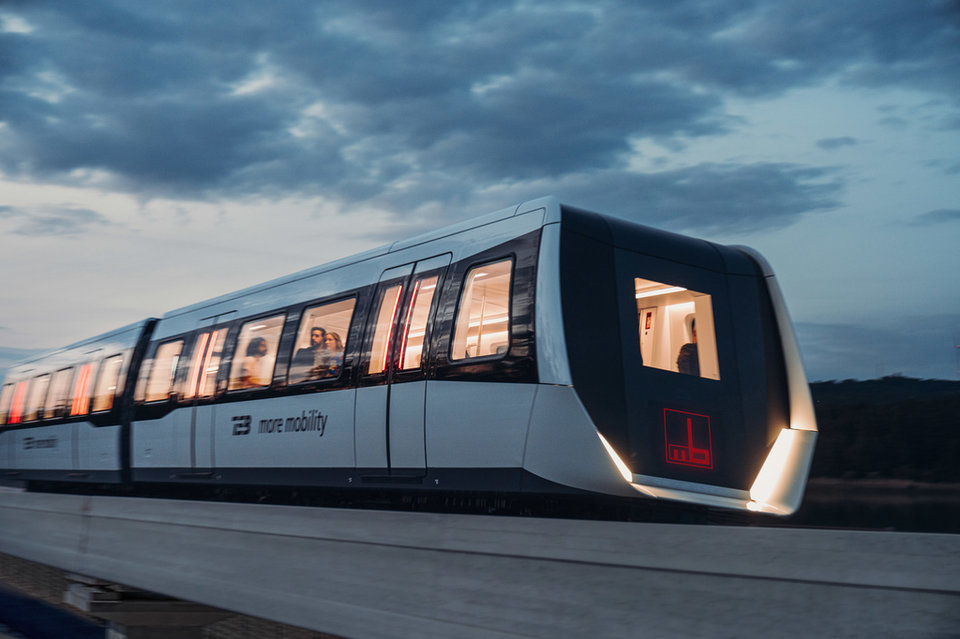All images: Max Bögl
Q&A | High-speed rail
Creating sustainable high-speed railways with Thales
Frankie Youd spoke to Thales high-speed rail director David Taylor about how technology can be used to make high-speed networks more sustainable, and what the main challenges will be for HS2's next phase.
High Speed 2 (HS2) is the UK’s planned new high-speed railway line that will connect London with the city centres of Manchester, Leeds, and Birmingham. Phase 2 of the project will shortly be underway and connect Birmingham to Crewe with a planned completion date of 2032-33.
One of the world’s leading high-speed rail technology providers, Thales operates in the air, on the ground, in the depths of the oceans and even in space. The company’s solutions are used across the security, transport and defence sectors.
Taylor discusses how high-speed railways have become more sustainable, environmentally friendly networks, and the challenges that HS2 will face in the future.

Aerial view of the derailment. Image: UK Government
Thales high-speed rail director David Taylor. Credit: Thales

Frankie Youd: Could you give me a bit of background regarding Thales’s involvement with high-speed rail?
David Taylor: Thales provides technological solutions for some of the biggest high-speed rail networks in the world, with expertise ranging from traffic management, digital signalling and communications through to security systems.
In Spain, Thales has equipped more than 2,800km of the high-speed network with either signalling or communications technology. Spain has the largest high-speed network in Europe – the second largest in the world – and has transported over 400 million people around the country since its first high-speed passenger journey.
In Switzerland, Thales equipped European Train Control System (ETCS) Level 2 signalling technology in the Gotthard Base Tunnel – the longest rail tunnel in the world – stretching 57km beneath the Alps.
It has also been recently announced that Thales is working with Germany’s Deutsche Bahn on equipping the Stuttgart region with a digital signalling system. ETCS and automatic train operations (ATO) with driver. This is the first digital node in Germany and is going to be the reference point for other metropolitan regions throughout Europe for years to come.
When things did start to pick up, when the lockdown was relaxed, the trains were fantastic
What lessons has Thales learned from previous rail projects? How could these be applied to HS2?
One of the main lessons is the importance of having interoperable test labs, such as the labs we operate on behalf of SBB in Zurich to ensure that technologies from different suppliers all work seamlessly together.
Consider the Spanish high-speed network as another example, where multiple suppliers provided the ETCS signalling and interlocking. Ensuring that these different solutions can work together and be developed quickly is vital to the success of a high-speed project.
Not only do systems need to be able to work together, but so do the various parties and stakeholders involved in the project. Setting up collaborative working arrangements that consider longer-term contracts around support and services not only improves productivity but is a key part of minimising the whole-life costs of a project.
What are the main challenges for high speed in the UK and HS2 going forward?
There are three main challenges for the development and maintenance of HS2.
Firstly, it will require people with specific and highly technical skills. The work requires specialist engineering expertise. The challenge is to source and attract these specialists from STEM backgrounds.
Secondly, ensuring that these workers are both provided and supported with the right technology, resources and tools will be vital to the long-term success of HS2.
Finally, effective, reliable interfacing between different systems will also be key to the effective running of the network; high-speed projects, particularly those as large as HS2, require a great deal of intricate collaboration and it is essential to align all the various moving parts.

Image: MaxBögl
How can high-speed railways become more sustainable, environmentally friendly networks?
Overall, the transport sector is one of the most difficult to decarbonise, due to the continued reliance on fossil fuels for planes and cars especially.
However, emissions in the rail sector specifically have dropped by 40% in Europe over the past 25 years, despite an 8.5% increase in freight traffic and a 37% increase in passenger journeys.
This is largely due to most trains running on electricity but also because railways themselves are becoming more efficient. Better trains are one reason. But equally important are innovative command and control systems. These not only reduce carbon emissions but also increase the capacity and attractiveness of rail.
Digital technologies hold the key to continuing this trajectory. The development of ETCS L3 signalling, for example, provides an opportunity to make high-speed rail even more sustainable due to the capability of this technology to optimise the efficiency of a train’s journey.
Traffic management and driver advisory systems are also powerful tools for optimising journeys and reducing consumption, while multimodal tools will make low-carbon journeys more accessible by using a Mobility-as-a-Service model to make route planning significantly easier for all passengers.
What role has rail played so far when it comes to sustainability and environmental conservation?
The savings in CO2 emissions from high-speed rail compared to other modes of transport are significant. For example, in its first 25 years of operation, it is estimated that the Spanish high-speed network has saved around 12.9 million tons of CO2 and 2.6 million tons of oil.
Added to this, 100% of power consumed by high-speed trains in Spain comes from carbon-free, renewable resources.
How could HS2 help the UK Government to meet its goal of net-zero carbon emissions by 2050?
HS2 can play a key role in contributing to zero net carbon. In addition to the obvious benefits of being able to move people rapidly around the country in comfort, it is also important to consider that HS2 will release capacity on the conventional network for freight services.
By taking freight off roads and embracing rail, it will be possible to reduce the emissions produced by modes of transport using our roads, consequently easing congestion.
Ultimately, high-speed rail projects are part of the wider global shift towards efficient but more sustainable modes of travel, and HS2 is no different.
What do you think will be the most exciting rail technology trend this year?
Big data and its application to data-driven operations present fantastic opportunities for the rail industry.
Smart maintenance solutions can not only help operators manage and maintain their networks more efficiently, but also reduce the need for trackside working, which has benefits to the safety of employees.
We are facing an exciting moment for rail and the wider transport industry more generally though. The last year has dramatically shifted priorities for travellers and providers and we are therefore likely to see a significant acceleration of various digital technologies across the industry.
We are excited to see how this progresses and help drive this forward.